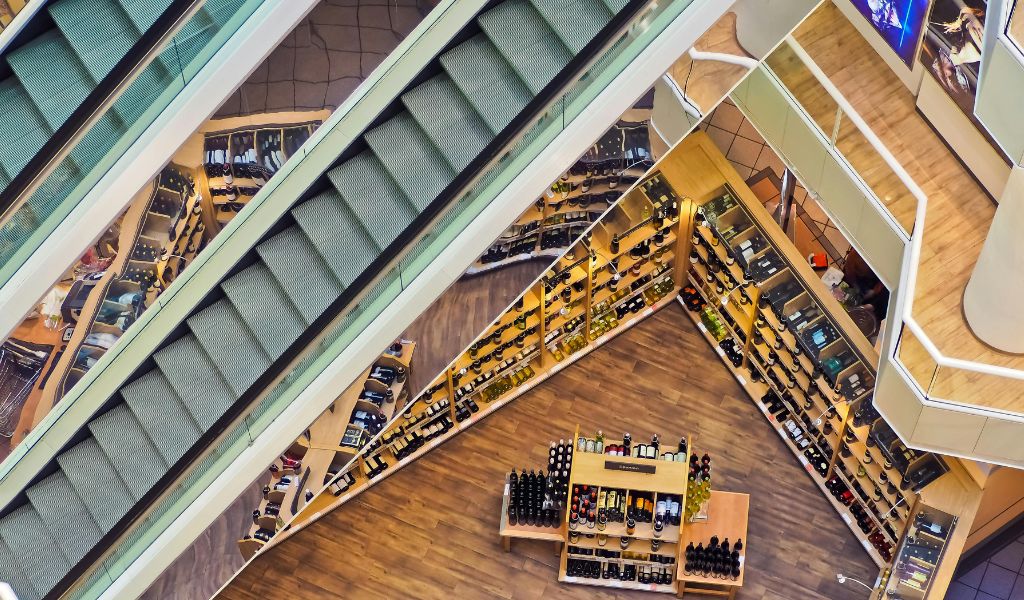Multisensory Retail: Designing Experiences That Speak to the Senses

While online shopping keeps pushing the boundaries of convenience, physical retail spaces are presented with one nagging question: how to provide something more — something memorable. In a time when people can buy nearly anything with one click, physical stores need to go beyond transaction to transformation.
This is where multisensory detail for retail enters the picture — a design and customer experience ethos that engages not only the eyes, but the touch, sound, scent, and even taste.
By engaging multiple senses, brands are able to create immersive experiences that drive emotion, inform purchase decisions, and build stronger brand loyalty.
Done well, sensory design makes a typical store visit a multilayered, emotional experience that lasts long after the shopper has departed. It’s the beat of expertly crafted music that modulates according to the hour, influencing shopper pace subtly.
It’s the aroma of a recognized scent that brings memories of past visits flooding back. It’s the warm textures of materials — sumptuous leather seats, rich wood finishes, or touch-sensitive fabric exhibits — that draw customers in to touch, interact, and connect.
These sensory elements are seemingly minor individually, but collectively they are the foundation for an experience that goes beyond mere product exploration. They craft moments that stick, allowing consumers to remember not only what they purchased — but how they felt while there.
Beyond Atmosphere: Sensory as Strategy
While atmosphere is significant in store design, multisensory design for retail marketing is much more profound than the creation of an agreeable environment. It’s a strategic tool that impacts how things are perceived, how brands are recalled, and the way people act.
In the competitive marketplace of today, how something is experienced is as vital as what’s being sold. Sensory design makes this a reality by influencing perception at every touch point.
- Touch: Textured packaging, bespoke fixtures, and interactive displays can highlight craftsmanship, luxury, or innovation. For example, a fashion brand may employ smooth fabrics and organic materials to hint at comfort and sustainability, while a retailer of technology employs smooth, chilled metals and glass to convey precision and performance.
- Sound: Tempo, tone, and volume of music influence dwell time and the rate at which consumers browse through a space. Slow-tempo music is found to prolong dwell time, while high-energy songs energize and promote quicker browsing.
- Smell: Scent is perhaps the most potent stimulus of emotion and memory. A distinctive scent can instantly ground brand recognition — consider the ubiquitous fragrance employed by upscale hotels or expensive boutiques that generates familiarity and comfort.
- Lighting: In addition to seeing, lighting influences mood and guides attention. Warm, gentle light can render products more inviting, while sensational, color-shifting LEDs can highlight innovation and contemporariness.
- Taste: For food, beverage, and hospitality brands, taste involves customers in the most immediate way possible — converting brand discovery into a physical, experiential activity.
All together, these layers of sense convey a story — one that shapes mood, confirms identity, and compels purchase intention.
The most effective multisensory spaces are not created on accident; they are the result of intentional design that harmonizes all sensory elements with the purpose of the brand.
For instance:
- A boutique jewelry store could celebrate silence or minimal acoustics to create a feeling of exclusivity, where every sound — a clasp closing or a gem being set on velvet — is heavy with intention and meaning.
- A sportswear brand could feature dynamic beats, kinetic lighting, and interactive digital display that reflects athletic motion, engaging customers in the active lifestyle of the brand.
- A wellness or skincare shop could employ natural textures, soothing fragrances such as lavender or eucalyptus, and soft instrumental soundscapes to convey purity and tranquility.
Even deliberate omission of certain sensory stimuli can be potent. Minimalism — whether audio, aroma, or visual — can express sophistication and mastery. It’s not necessarily about putting more in, but about restraint and cutting to create unity.
Ultimately, multisensory design turns a shop into a living brand story — where architecture, materials, and technology conspire to tell a story that shoppers don’t merely observe, but experience.
Technology Intersects with Sensation: The Emergence of Smart Retail Spaces
Retailers’ most cutting-edge ones today are merging sensory design with digital innovation. Interactive screens, projection mapping, and AI-driven soundscapes empower spaces to change dynamically in response to consumer behavior.
- Motion sensors can induce light or sound when a customer walks by a display, introducing surprise and interaction.
- Digital fragrance diffusion systems deploy specific scents by zone or by time of day, reinforcing mood transitions between departments.
- Virtual try-on experiences and augmented reality (AR) introduce sight and touch elements that enable consumers to visualize ownership.
- AI-based analytics quantify dwell time, gaze direction, and affective response, enabling brands to calibrate sensory components to deliver maximum effect.
This convergence of data and design forms a loop of feedback — where sensory experience is made measurable, tweakable, and customizable. This enables brands to improve perpetually in harmony with consumer aspirations.
The Psychology of Multisensory Engagement
Fundamentally, multisensory retail is an appeal to human psychology. Sensory stimulus speaks directly to the emotional parts of the brain, affecting how individuals perceive value and create memories.
A unified sensory experience:
- Bolsters brand recall — consumers recall multisensory experiences as much as 70% longer than single-sense experiences.
- Bolsters perceived quality — touch and aroma can unconsciously enhance a product’s “premium” feel.
- Increases conversion rates — inviting spaces boost the chances of impulse buys.
- Increases loyalty — consumers return to places where they feel engaged and at ease.
Briefly, sensory involvement makes consumption about belonging. It makes customers active contributors to the brand narrative and no longer mere spectators.
Shifting Expecations: What Today’s Buyers Expect
Consumers today yearn for connection, significance, and authenticity. They’re not buying products — they’re looking for meaningful experiences that resonate with their values and who they are.
Younger generations, particularly Gen Z and Millennials, are leading this change. They prioritize personalization, interactivity, and emotional connection over raw convenience.
A store that connects several senses has the ability to create shareable moments — ones that are perceived as genuine, social, and memorable.
That’s why even those who are digitally native are opening up physical locations. Pop-up experiences, concept stores, and blended retail spaces enable them to engage the senses and deepen their emotional presence.
From Transaction to Transformation
The function of the brick-and-mortar store has changed. It’s no longer merely a distribution channel — it’s a brand theater, a platform upon which the narrative is played out through all senses.
Multisensory retail enables brands to take mundane customer interactions and turn them into immersive brand experiences that foster loyalty, drive engagement, and maintain relevance in a rapidly digitalizing world.
By carefully crafting sight, sound, scent, touch, and taste, retailers are able to create spaces that are both intimate and meaningful — spaces in which shoppers don’t merely purchase goods, but belong to something more.
The Future of Retail Is Sensory
While online convenience continues to reign over the transactional aspects of retail, the physical store’s biggest advantage is the emotional. The future is for retailers who realize that connection trumps convenience — and that the road to connection is through the senses.
Through a multisensory design retail approach, brands can stand out in competitive markets, extend dwell time, drive conversions, and give customers something much more valuable than a receipt: a memory.
Want to transform your store into a sensory experience? Discover how a deliberate approach to sight, sound, scent, touch, and taste can take your brand to the infographic below by Frank Mayer and Associates, a premier kiosk machine and retail display manufacturer assisting brands in crafting immersive environments that stimulate all the senses.










